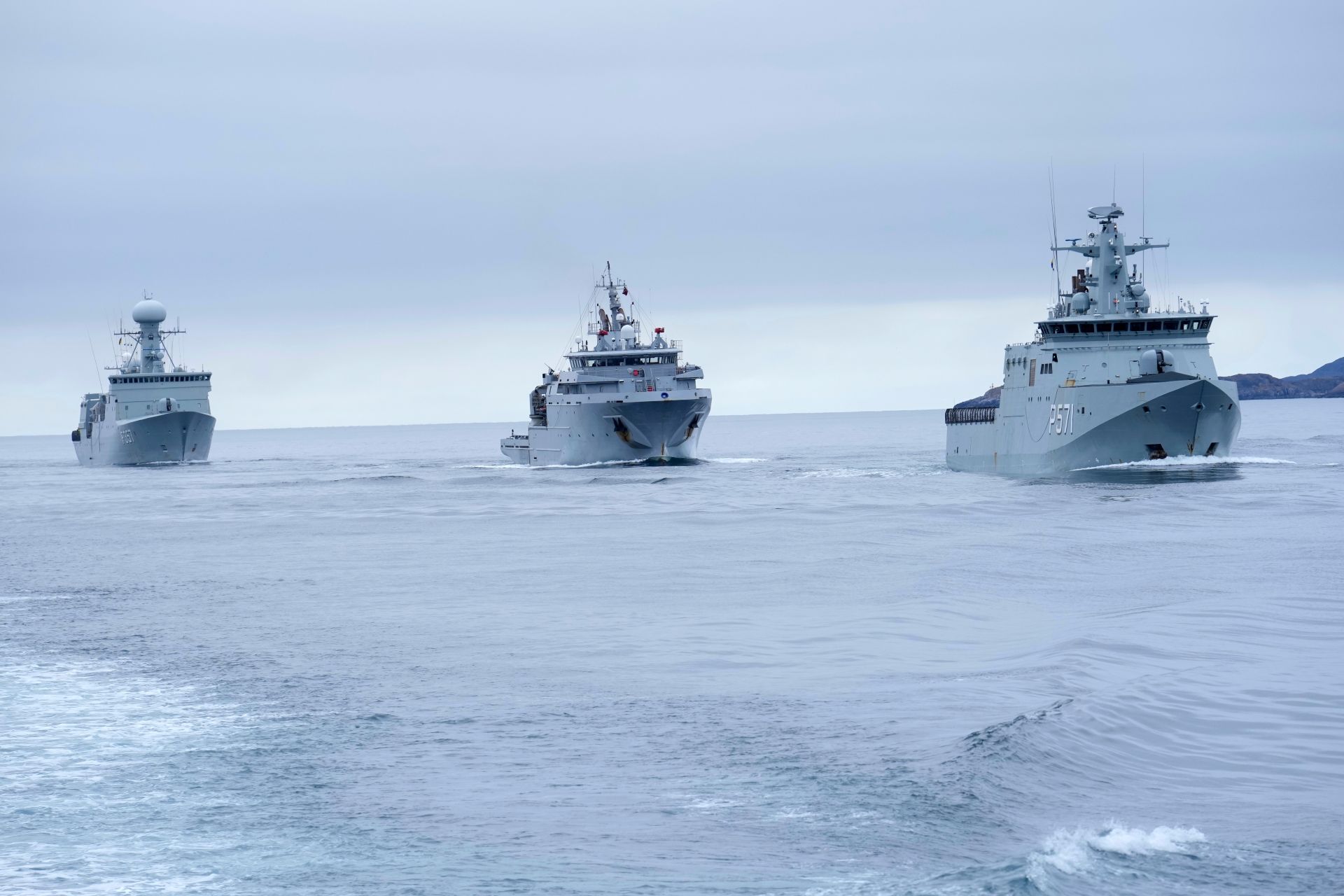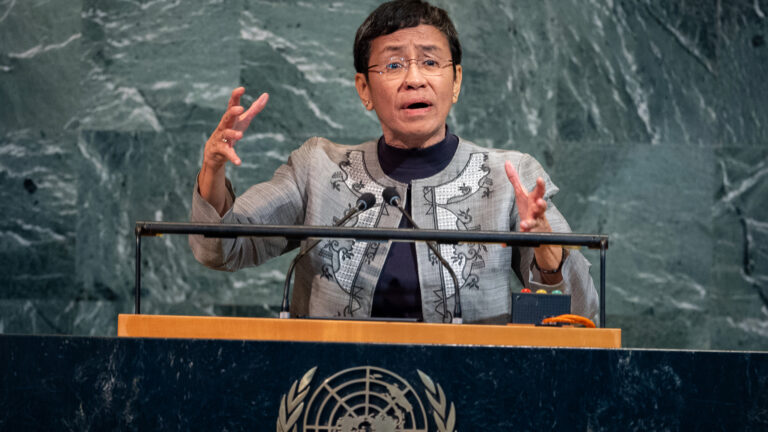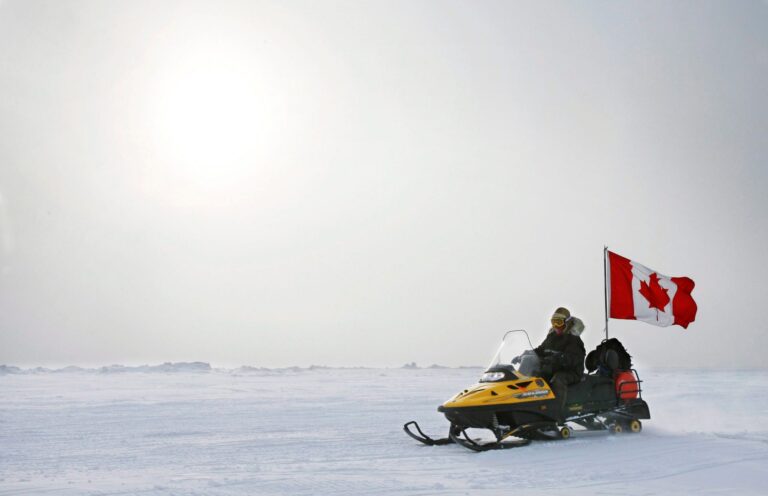Good defence policy begins with good threat assessment: Priorities, procurement, and diplomacy should all flow from a clear judgment about who might act against Canada’s interests, how they might act, and where.
This is not the case in the Arctic, where Canada still lacks a public, whole-of-government threat assessment that provides this integrating logic to align investments and authorities across departments. If Ottawa is serious about Arctic security, this situation is untenable.
Faced with the actions of Russia, China, and even allies in the Far North, Canada needs clarity regarding the threats these actions pose. This means developing a credible threat assessment that does the following:
- clearly identifies likely actors, their objectives and related behaviours;
- specifies near-term potential scenarios based on how these actors might pursue their objectives in the Arctic;
- maps each scenario to gaps in Canada’s capabilities and authorities;
- specifies co-ordinated policy remedies; and
- at each of the preceding steps ensures co-operation with Indigenous communities and Allied nations.
If done properly, this would turn rhetoric into deterrence and mitigation, and expenditures into solutions.
Where things stand
To be sure, parts of the puzzle are in place. Our North, Strong and Free and Global Affairs’ updated Arctic Foreign Policy, for example, both identify Russia, China, and hybrid threats and commit to surveillance, infrastructure, and resilience. The Department of National Defence (DND) also has called for a Strategic Campaign Plan to provide Arctic operational direction. However, these aren’t integrated or cross-departmental and, as such, are simply no substitute for a whole-of-government threat assessment.
Recent releases acknowledge the urgency of the challenge. Canada’s own internal oversight bodies have flagged the vulnerabilities. The auditor general has found incomplete surveillance coverage, weak information-sharing, and platforms so delayed in their replacement cycle that some might be retired before their replacements arrive. NORAD modernization—with its Arctic over-the-horizon radar—offers a long-term solution, but full modernization lies years away.
Step 1: Actors, objectives and behaviours
Russia will continue predictable, low-level probes in under-ice submarine transits, long-range bomber flights, and electronic warfare in ways that are calibrated to test Canada’s surveillance and response capabilities without crossing escalation thresholds.
China will pursue “science-first” and “commerce-first” projects to generate military-relevant data and leverage (hydrographic surveys, remote sensing, telecommunications footholds, research partnerships) that remain formally deniable as they expand operational awareness and footholds.
Hybrid and non-state actors will exploit northern infrastructure and community fragility, thin northern logistics, and manipulation of information dynamics as climate change degrades permafrost and accelerates weather volatility.
Even close allies will create friction, from disagreements over the Northwest Passage and mismatched seabed-mapping protocols to gaps in common operating pictures, resulting in operations that will be complicated even where intent is benign.
Step 2: Near-term scenarios
For Russia, observable, near-term scenarios include covert attack submarine (SSN) transits through existing submarine chokepoints, aerial incursions that force Canadian intercepts and change command post posture, denial of global navigation satellite systems (GNSS) along key maritime corridors, and interference with seabed sensors or cables.
Scenarios involving China could include marine surveys that can double as submarine navigation mapping, telecom projects that create data exfiltration risk, dual-use research sites, and commercial investments that create future supply-chain leverage.
Examples of hybrid actor scenarios include ransomware against hospital networks in Yellowknife or Iqaluit, spoofed navigation near Arctic ports and shipping lanes, illegal fishing or mining behind shell companies, and misinformation campaigns and influence operations aimed at eroding trust between Ottawa and Indigenous communities.
Scenarios involving allied-generated risk include legal and political disputes over the Northwest Passage that complicate combined operations and planned exercise schedules that strain already thin northern logistics.
Each of these scenarios needs triggers, key indicators, and plausible timelines that will allow surveillance and policy responses to be pre-positioned rather than improvised.
Step 3: Current and projected capabilities
The third step is to lay these scenarios against Canada’s current and projected capabilities and authorities. Surveillance coverage undersea, over the horizon, and in space is insufficient for these scenarios, and over-the-horizon radar is coming but not yet operational. Key platform and ice-capable asset renewal cycles are seriously out of phase with expected risk. Furthermore, cyber defences for northern critical infrastructure are inconsistent, and information-sharing across DND, other departments, and Indigenous governments is sporadic.
Authorities are also patchy. Permitting and investment-screening tools do not currently surface state-backed strategic intent masked in commercial forms. Consultation triggers and decision rights are not wired to operational decisions at the strategic level and response authorities are spread across departments in ways that leave seams adversaries will inevitably probe.
Each of these gaps makes it easier to act at or below the threshold of attribution.
Step 4: Co-ordinated policy remedies
Solutions need to be as granular as the problem set. The largest seams – the most glaring gaps or misalignments between capabilities, authorities, and information-sharing – should be closed first. This means accelerating undersea sensing and data fusion, hardening GNSS-dependent systems with backups and spoofing detection, establishing joint (civil-military) cyber-response playbooks with provincial, territorial, and Indigenous partners, and modernize permitting and investment-screening so dual-use projects are flagged at the application stage. Platforms and assets must be procured against those scenarios, not against line-item wish lists.
A permanent Arctic scenario board with civil, military, Indigenous and allied membership must be created to update this map annually to reflect climate and geopolitical shifts.
Step 5: Indigenous participation and Allied integration
Each of the above steps should be taken with two cross-cutting considerations in mind. First, Indigenous participation must be operationalized. Northern communities provide presence, knowledge and domain awareness no satellite or distant radar can match. Their insights should be wired upstream into surveillance, intelligence, planning, procurement, and basing through explicit decision rights and consultation triggers.
Second, allied integration has to be included as a force multiplier. Many of the gaps identified earlier – sensor coverage, data fusion, logistics, air and missile defence – are affordable and effective only when federated. Shared sensors and fused data, common operating pictures, joint exercises, and clear rules for operating in and around the Northwest Passage should flow from the same scenario map that guides Canadian spending. These requirements must be baked into governance and the budget cycle as preconditions, not afterthoughts.
The way forward
Seen in this light, the policy path is surprisingly straightforward: Publish a concise, iterative Arctic threat assessment that:
- sets a taxonomy of state, non-state, hybrid, and ally-generated risks;
- articulates the concrete actions each can take and the indicators to watch;
- maps those scenarios to capability and authority deficits; and
- assigns a remedy set across procurement, regulation, diplomacy, and alliance mechanisms with clear timelines and owners. Refresh / review this cycle annually. As climate, technology and geopolitics shift, this assessment should shift, too.
Do this and everything else falls into place: Radar projects and icebreakers fit into a cohesive mosaic; Investment-screening and research-security policies have a scenario-tested rationale; Indigenous engagement is an operational pillar, not an afterthought; Allied initiatives – NORAD, seabed-sensing collaboration, shared cyber response – plug into the same map instead of running on parallel tracks.
The alternative is policies ungrounded in strategy. Canada will continue to spend more money while buying too little security, reacting to anomalies rather than deterring them, and discovering regulatory and jurisdictional seams only when adversaries open them. The Arctic is changing fast and so are the incentives and behaviours of those operating there. A disciplined, whole-of-government threat assessment is how Canada keeps pace and, at long last, shapes the Arctic security environment, rather than being shaped by it.











